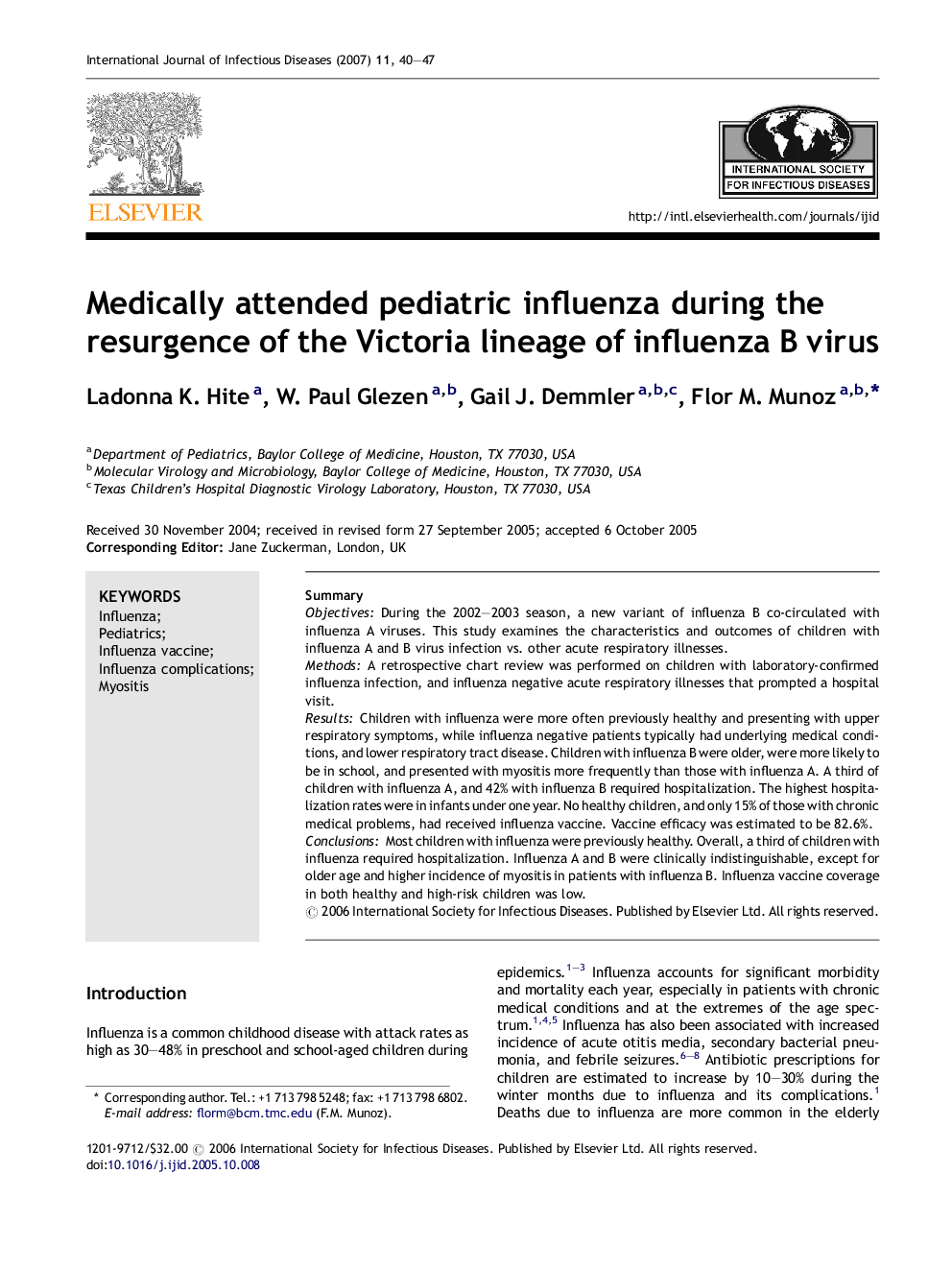| Article ID | Journal | Published Year | Pages | File Type |
|---|---|---|---|---|
| 3365185 | International Journal of Infectious Diseases | 2007 | 8 Pages |
SummaryObjectivesDuring the 2002–2003 season, a new variant of influenza B co-circulated with influenza A viruses. This study examines the characteristics and outcomes of children with influenza A and B virus infection vs. other acute respiratory illnesses.MethodsA retrospective chart review was performed on children with laboratory-confirmed influenza infection, and influenza negative acute respiratory illnesses that prompted a hospital visit.ResultsChildren with influenza were more often previously healthy and presenting with upper respiratory symptoms, while influenza negative patients typically had underlying medical conditions, and lower respiratory tract disease. Children with influenza B were older, were more likely to be in school, and presented with myositis more frequently than those with influenza A. A third of children with influenza A, and 42% with influenza B required hospitalization. The highest hospitalization rates were in infants under one year. No healthy children, and only 15% of those with chronic medical problems, had received influenza vaccine. Vaccine efficacy was estimated to be 82.6%.ConclusionsMost children with influenza were previously healthy. Overall, a third of children with influenza required hospitalization. Influenza A and B were clinically indistinguishable, except for older age and higher incidence of myositis in patients with influenza B. Influenza vaccine coverage in both healthy and high-risk children was low.
